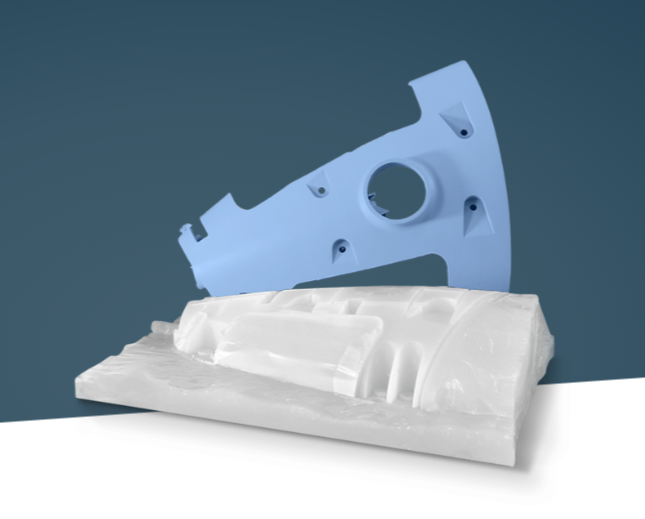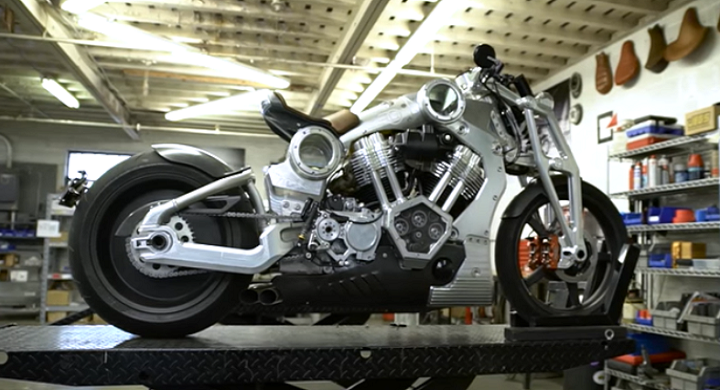
Combining Old and New Technology
Remember the days when people thought that we would all end up with our own home desktop 3D printers to make anything our hearts desired and would never have to leave the house to buy consumer goods again? While I’m not saying this future isn’t still in the cards (imagine never having to get in another shopping cart lane battle at the store!), most people have realized this might be just wishful thinking and are focusing on other uses for additive manufacturing – such as combining the technology with traditional forms of manufacturing.
Just because you’re interested in 3D printing doesn’t mean you have to completely forget about all of the existing manufacturing technologies – you can complement your workflow, learn something new, and add that skill to your wheelhouse. And try as you might, it’s not always economically feasible or the right choice for your business to switch completely over to 3D printing. So one more time for the people in the back – by combining conventional manufacturing with 3D printing, companies can truly augment and speed up their workflows.
3D Systems knows a little something about this, as the company offers both additive and subtractive manufacturing capabilities through its On Demand manufacturing services.
“Our online 3D printing portal was designed by engineers for engineers,” the 3D Systems On Demand webpage states. “Our goal is to make the process of ordering 3D printed parts and prototypes the easiest in the industry.”

This is what sets 3D Systems apart from other service bureaus in the market. In fact, the company just released an eBook, titled “The Benefits of Traditional and Additive Manufacturing from a Single Source,” that’s all about combining 3D printing with other types of manufacturing it offers, such as CNC machining, investment casting, injection molding, urethane casting, sheet metal, die casting, etc. The campaign for 3D Systems’ new eBook recently went live, and the book itself discusses different ways to combine additive and traditional manufacturing for the optimal effect, in addition to using your project budget in the most efficient way, speeding up time to market, and the best ways to fulfill design goals.
3D Systems On Demand service bureau offers traditional injection molding for low-volume projects, and most commercially available thermoplastics from production-grade tooling are available. Nearly 20 different materials are available, with ten finish options, including Light Texture, Mirror, and Color-Matching. A urethane casting service is also available for rapid prototyping purposes, with a wide array of materials and three different finishes offered.

“One of the greatest benefits of the Cast Urethane process is the ability to over-mold existing parts or hardware with a second material,” the website states.
Learn more about the traditional Capabilities such as Cast Urethane in the new eBook.

While you can visit many vendors to receive external prototyping and production services, there aren’t too many like 3D Systems that offer a full range of options in both traditional and additive methods. For example, less than a year ago, the company released its ProJet® MJP 2500 IC RealWax™ 3D printer, which lets existing investment casting operators switch to additive manufacturing for their patterns, using 3D Systems’ MJP 3D printing technology. In addition, its VisiJet® M2 ICast (MJP) material is wax, which means it will work within the existing foundry without requiring any updates or changes to furnaces or temperatures.
Four years ago, 3D Systems also highlighted its digital molding technology for the first time. This is a scalable 3D printing process – backed by the company’s configurable Figure 4® technology – that lets you do tool-less production, and is a good alternative for low-volume plastic part production.

3D Systems’ Figure 4®
Confederate Motors, which has been designing and manufacturing bespoke motorcycles in small batches for over two decades, has been collaborating with 3D Systems On Demand since 2014 in an effort to convert 140 different designs into prototypes and production parts for its P51 Combat Fighter. 3D Systems provides a one-stop shop for Confederate Motors’ motorcycle parts, including everything from the intake manifold and swing arm parts to the front and back fenders and the key to start up the motorcycle.
“With the exception of some engine components, wiring, wheels, tires and lighting, 3D Systems makes every part of the Fighter. We save a tremendous amount of time and hassle by being able to consolidate part production with one primary vendor. Parts go together better coming from the same vendor, and we can be assured that the part finish of everything will match,” said Jordan Cornille, a designer at Confederate Motors.
“We like to move quickly in our decision-making processes and design quickly in order to offer our customers as many solutions as possible within a certain time frame. We don’t produce thousands of copies of each model, and 3D Systems allows us to change designs frequently without committing to thousands of dollars worth of tooling.”

3D Systems used plenty of CNC machining to make the parts for the P51 Combat Fighter motorcycle; according to the 3D Systems On Demand site, this subtractive technology “is the best choice for rapid prototyping of high-quality metal and plastic parts” that need an extremely high degree of dimensional accuracy. The service bureau offers a variety of different materials and finishes for CNC machining and promises a standard delivery time of 1-2 weeks, based on the order.
As noted in its new eBook, the company also offers integrated additive and traditional manufacturing approaches, which is perfect for projects that need to combine the ability to manufacture complex shapes at a faster rate of speed with high precision. Room Temperature Vulcanization (RTV) is just one of these integrated processes – it uses 3D printed masters and silicone molds to produce high-quality parts in low to mid-volume batches, without having to rely on expensive hard tooling. The benefits of RTV include a large material selection, a shorter lead time, and the ability to over-mold existing hardware and parts with an additional material.
“When the 3D Systems On Demand service bureau was established several years ago, the company expanded its expertise and resources through strategic acquisitions, not only for 3D printing and additive manufacturing, but for traditional approaches as well,” the eBook states. “3D Systems On Demand now has a worldwide network of facilities to locally service companies that need a stable, reliable, well-resourced and uniquely experienced partner.”
To learn more about the wide variety of additive and traditional manufacturing processes that 3D Systems offers through its On Demand service bureau, check out the company’s new eBook, or contact us for more details.
[Images: 3D Systems]
Subscribe to Our Email Newsletter
Stay up-to-date on all the latest news from the 3D printing industry and receive information and offers from third party vendors.
You May Also Like
Gorilla Sports GE’s First 3D Printed Titanium Cast
How do you help a gorilla with a broken arm? Sounds like the start of a bad joke a zookeeper might tell, but it’s an actual dilemma recently faced by...
Nylon 3D Printed Parts Made More Functional with Coatings & Colors
Parts 3D printed from polyamide (PA, Nylon) 12 using powder bed fusion (PBF) are a mainstay in the additive manufacturing (AM) industry. While post-finishing processes have improved the porosity of...
$25M to Back Sintavia’s Largest Expansion of Metal 3D Printing Capacity Since 2019
Sintavia, the digital manufacturing company specializing in mission-critical parts for strategic sectors, announced a $25 million investment to increase its production capacity, the largest expansion to its operations since 2019....
Velo3D Initiates Public Offering in a Bid to Strengthen Financial Foundations and Drive Future Growth
Velo3D (NYSE: VLD) has been among a number of publicly traded 3D printing firms that have attempted to weather the current macroeconomic climate. After posting a challenging financial report for 2023,...































